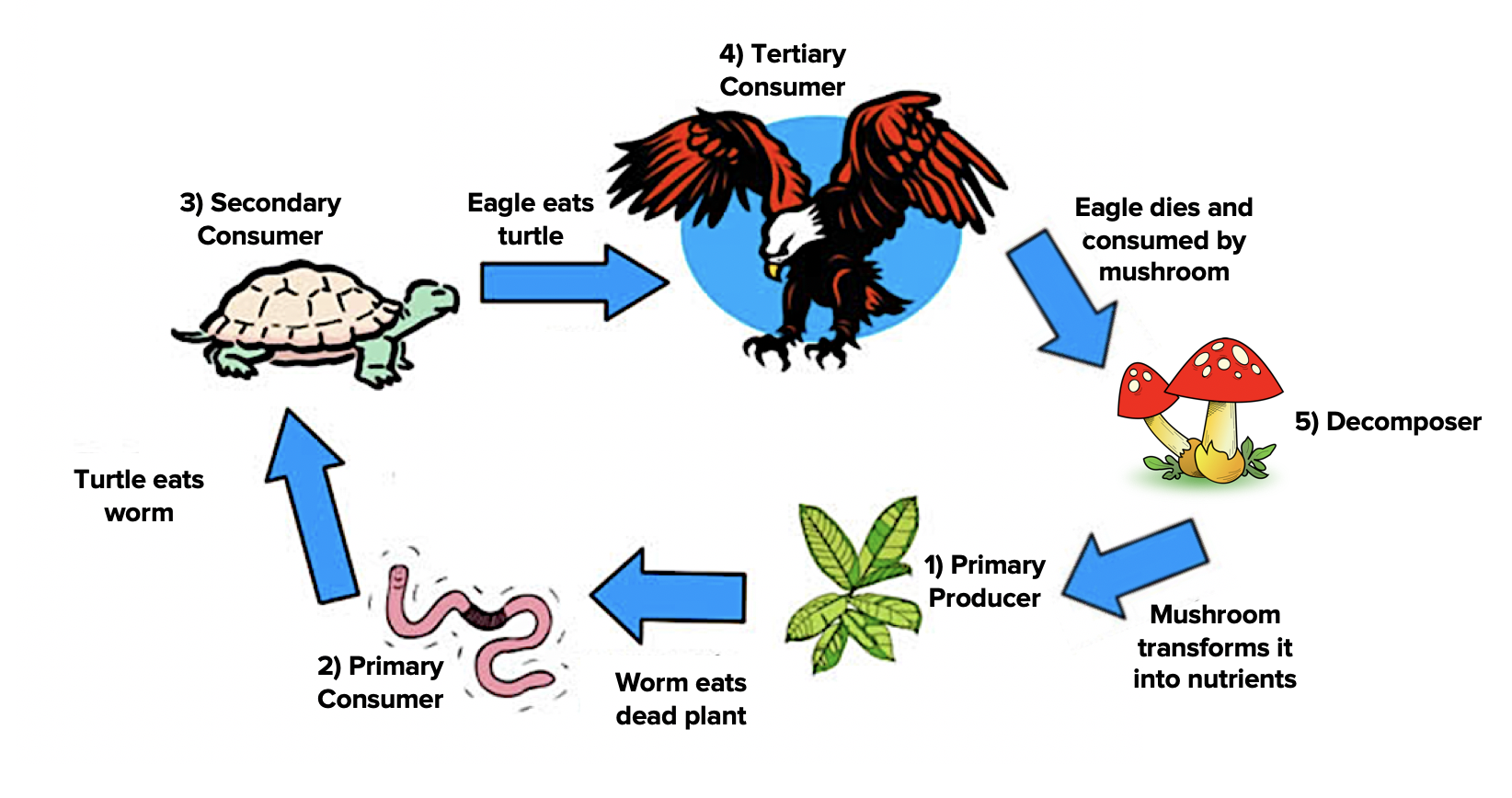Table of Contents |
Trophic levels in an ecosystem are essentially the hierarchy of feeding and trophic interactions, including the transfer of energy, carbon, and nutrients from one organism to another.
The trophic pyramid (below) illustrates how energy is passed from one level to the next. This image only illustrates the pyramid up to the level of tertiary consumers. However, there can be up to six trophic levels in an ecosystem.
Primary producers transform energy from sunlight into biologically useful energy or sugars. Primary productivity is the rate at which producers can obtain energy from sunlight, and it is dependent on the amount of sunlight, temperature, and moisture.
The energy captured by primary producers is then moved up the trophic pyramid as higher level consumers eat organisms from the levels below it.
Secondary productivity is the rate at which consumers convert organic material into biomass. In this sense, biomass describes the dry mass of organic material in an organism, and this can be used for energy. However, secondary productivity introduces no new energy into the system. It is entirely dependent on what was produced by primary productivity.

As shown in the percentages in the diagram above, as energy moves up the pyramid, only 10% of energy from the previous level is captured. The other 90% is lost as metabolic heat because of inefficient energy transfer. This loss of energy going up the pyramid is what limits the maximum number of trophic levels to six. There is not enough energy to sustain higher levels.
Food chains are representations of who eats whom in an ecosystem. This diagram demonstrates how trophic levels help us distinguish between types of organisms.

Food webs, like the one shown below, are diagrams of trophic interactions. They represent ways that organisms obtain energy from other organisms. The majority of food webs are quite complex and involve many organisms and relationships.

This food web shows that the primary producers are at the first trophic level. The primary consumers represent the second trophic level, and the secondary consumers represent the third trophic level.
Source: THIS TUTORIAL WAS AUTHORED BY JENSEN MORGAN FOR SOPHIA LEARNING. PLEASE SEE OUR TERMS OF USE.